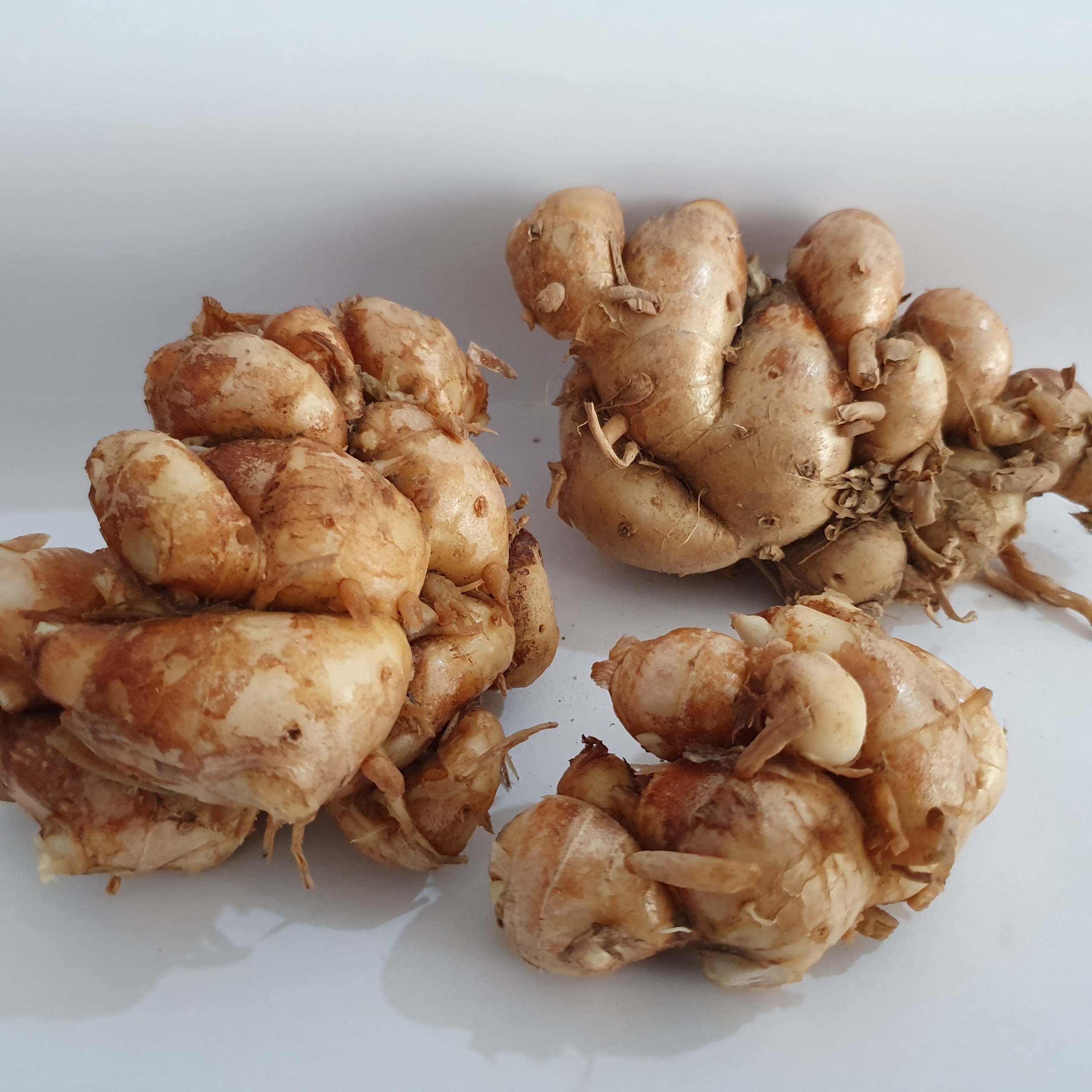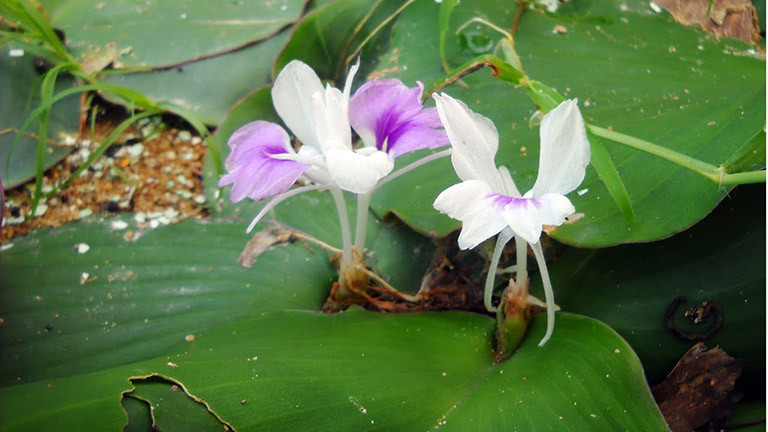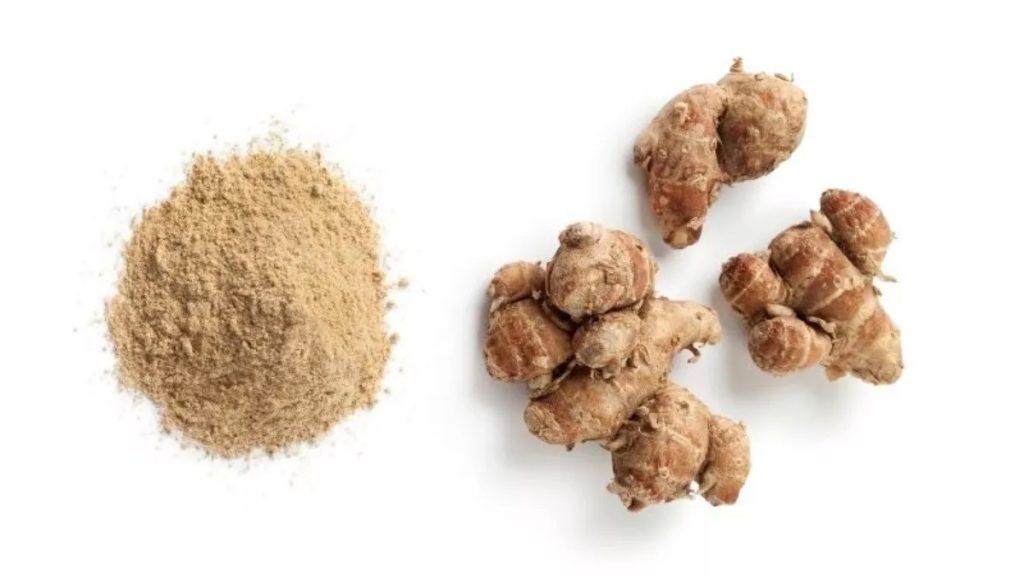
The Sand ginger is a plant that is widely cultivated or grows wild in our country. For a long time, this medicinal plant has been used to treat some cases of bone and joint pain and diseases related to the digestive tract such as stomach pain, bloating…

-
Characteristics of Sand ginger plants
Sand ginger plant is also known as Tam Nai, Son Nai, Thien Lien or Sa Khuong scientific name Kaempferia galanga L belongs to the Ginger family (Zingiberaceae). This is a perennial herbaceous plant with no stem. The leaves are nearly round, egg-shaped and consist of 2-3, have sheaths and grow out on the ground. The leaf blades are 6-7 cm wide and 8-10 cm long, smooth, with whole leaf edges and slightly hairy undersides. The inflorescences grow in the leaf axils, have no stems, and are white with a purple tint. The rhizome has many small tuberous roots, growing one after another and has an ovoid shape with many horizontal stripes.

This herbs is planted or grows wild in many places in our country and in Asian countries such as Thailand, Laos, Cambodia, China, India, Malaysia and Indonesia… People often use the rhizomes of this plant to make medicine, the rhizomes are harvested in winter and spring. After harvesting, bring them home, wash them, cut them into pieces and dry them.
-
What are the effects of Sand ginger root?
Many people wonder what diseases the sand ginger plant treats, because a lot of diatomaceous earth grows wild in the country. If we know its effects, we can use it usefully, avoiding wasting medicinal plants around us.

Sand ginger is a medicine that has been used in the treatment of diseases for a long time. Nowadays, dia jun has been shown by researchers to have a number of pharmacological effects and is used clinically. Some effects of earth include:
According to medical research, it has pain-relieving, anti-inflammatory and fever-reducing effects. Sand ginger has the effect of reducing frequency and intensity in some cases of pain or reducing inflammation, anti-inflammation is also the effect of increasing the pain relief effect of dia jun. In cases of fever, it also proves to help reduce body temperature.
According to Oriental medicine, the local medicine has a spicy taste and warm properties that have the effect of warming the spleen, relieving pain, reducing qi, eliminating phlegm, dispelling cold, clearing food and eliminating rheumatism. It should be used to treat cold chest and stomach pain, toothache, often used as medicine to help treat digestive disorders, indigestion, and also as an inhalation medicine or to treat beriberi, rheumatism, headache, muscle and joint pain.
In China, people use this plant to treat bloating, gastritis, stomach ulcers, toothache, rheumatism, and bone pain.
In the Philippines, instant decoction can be used to treat malaria and indigestion. The leaves are washed, crushed, then heated and applied to painful joints.
In Malaysia, the rhizome is used to treat high blood pressure, ulcers, colds, and asthma. Leaves and rhizomes are chewed and sucked to treat coughs and sore throats.
In addition, the application of essential oils is also used to make perfumes, cosmetics, and flavor enhancers in foods.
-
Remedy to treat diseases from Sand ginger
Some remedies that have the effect of treating diseases from local herbs include:
Cure colds, fever and headaches Sand ginger 5g, angelica 5g, cat can 10g are ground finely and made into pills, helping to reduce fever and relieve headaches.
- Treats poor digestion, bloating, slow digestion, cold chest and abdomen, and pain
Method 1: Use 4 to 8g of land to decoct the medicine and drink. Alternatively, you can powder the rhizome and drink it.
Method 2: Use equal doses of ground worms, dong quai, cloves and licorice, then grind them into powder, then mix with starch and make balls the size of corn kernels. Take 10 pills each time, 2 to 3 times a day.
- Treat whooping cough
300g diaphora, 300g lime leaves, 1000g honey-soaked white tangerine (Strawberry root bark), 1000g fresh purslane, 1000g fresh pennywort, 500g perilla leaves, just enough diameter, cook with 12 liters of water and simmer over medium heat. 4 liters left, then put in a glass jar and add sugar. Children drink about 15-30 ml every day.

- Treatment of long-term constipation, headache, indigestion, and fever according to experience
Use 1000 grams of diaphora, 1000 grams of celery, 1000 grams of fresh pennywort and 500 grams of licorice. Dry and grind into powder. Every day take 2 to 4 grams, dissolve in water and drink.
- Treats indigestion, sciatica, stomach pain
Use 20g of ground cinnamon and 10g of cinnamon to grind into powder form. Take 3 times a day, 2 grams each time.
- Treat toothache, tendon pain, back pain
Use wine soaked in rhizome of Dia instant alone or in combination with some other medicinal herbs such as hematoma, millennium suet, star anise, cinnamon… to massage, treat bone and joint pain, numbness or suck to treat pain. toothache, please do not drink.
-
Be careful when using Sand ginger
This herbs has warming properties and some active ingredients can cause some side effects that affect health. Therefore, it should not be abused in large doses for long periods of time. People with yin deficiency, anger, stomach pain or anemia should not use this plant to treat the disease.
During use, if you notice unusual symptoms, you should temporarily stop using and notify your doctor. Sand ginger is a very popular plant in our country, which can be used to protect health and treat some medical conditions. However, you need to be careful not to overuse and use it indiscriminately, especially orally, to avoid negative side effects for the body.


We’re a bunch of volunteers and starting a brand new scheme in our community. Your site provided us with helpful information to work on. You’ve performed an impressive task and our whole group might be grateful to you.